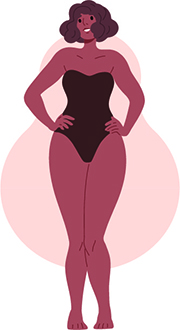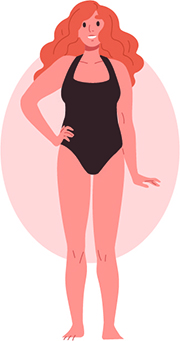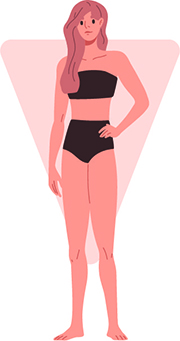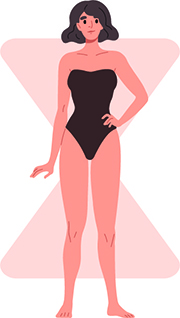International sewing patterns
International
sewing patterns
No language barrier · 9.500 patterns from 37 countries · incl. translation help
No language barrier · incl. translation help
9.500 patterns from 37 countries
Cuff fabric
Cuff fabrics are available in different variants. A distinction is made between ribbed cuffs and fine knit cuffs. Ribbed cuffs are more rugged and stronger, while fine knit is thinner. Depending on the garment and it's requirements, one or the other cuff fabric suits the project better.
In general all cuff fabrics are not woven but knitted, i.e. jersey fabrics. This means their elastic effect is not only due to the spandex content, but also to the manufacturing process.
What are the properties of cuff fabric?
Cuffs are usually made of cotton and also often have a small amount of spandex to achieve the desired high flexibility and elasticity of the fabric. In most cases, this proportion is around 5 percent elastane. The elasticity guarantees a high wearing comfort and the cotton quality gives the fabric a soft feeling on the skin. In addition, cotton fabrics are breathable and robust. Knit cuffs have the advantage that they can pull back to their original shape after being pulled apart, so they don't wear out as quickly as other fabrics. This keeps the hem of your garment nice and tight even after a long time.
Cuffing is ideal for arm or leg cuffs. One of the most common uses of cuffed fabric are leg ends, as well as the hem on the hips of sweatpants or loungewear in general. But also for the neckline of shirts or sweaters cuffed fabric is a very popular choice. More and more often, you can buy ready-made arm and leg cuffs that only need to be sewn on.
There is special cuff fabric that meets certain criteria and thus can be traded as organic. Cuffed fabric that meets these criteria can be recognized, for example, by the Oeko-Tex label or the label kbA cotton (from controlled organic cultivation). Organic fabrics have been produced under environmentally friendly and fair social circumstances. In addition, no harmful chemicals are used in the production process, which makes the fabrics even more skin-friendly and suitable for people that suffer from allergies. This is an advantage if you like to use your cuff fabric for baby and children's clothing.
What do I need to consider when processing ribbed fabric?
Preparation
Before you use the cuff for your sewing project and sew it, you should definitely wash the fabric. Due to the high cotton content, the fabric might shrink a little during the first wash. By washing the fabric before sewing, you can ensure that your garment will not be too small in the end and fits perfectly.
Cutting
The most important thing is not to stretch your waistband when cutting. Otherwise, you may end up with too little fabric for your finished piece. Also, make sure to double up your cuff fabric to get a nice, clean hem on the inside of your garment and not only on the outside. The long edges will then be joined to the garment later. In general, though, you should also keep in mind that you usually need less of your cuff than you do of your actual garment fabric. This way, the hem will fit tightly against your body later on. If you are working with a ready-made pattern, it is easiest to follow it with the exact measurements. Always use fabric scissors for a clean cut.
Sewing
Since cuff fabric is an elastic material, be sure to work with a zig zag stitch or an overlock machine. A straight stitch may not be able to adapt to the elasticity of the fabric and therefor tear later on.
To prevent the fabric from slipping while sewing, you can fix it with thin pins. Make sure that the seams of the garment and the cuff overlap, or that the seam of the cuff fabric is centered. This way the overall result is better looking
How to take care of cuffed fabric
Since cuffed fabric is usually only sewn to another fabric, and not the entire garment is made of it, you have to follow the care instructions of the other fabric as well. Usually cuffed fabric is quite easy to care for.
Washing
You can machine wash cotton cuffs with spandex. The most gentle way is to wash the fabric at a temperature of 30°C. Also make sure to adjust the spin cycle according to the other fabric.
Drying
Normally, cuff fabric can be machine dried. However, it is best to follow the manufacturer's special instructions and air dry your cuff fabric if necessary.
Ironing
If you need to iron your cuff fabric, it is best to do so at a moderate heat and with moisture. Again, be sure to follow the manufacturer's care instructions. Not only for the cuff fabric, but also for the combination fabric of your garment.
Sewing ideas for clothing and accessories
As already described, cuffed fabric is suitable for any kind of hem finish. Whether casual with sweatpants and sweater or sometimes a little fancier with a top. Jackets can also be cuffed at the sleeves and hem. Skirts and pants sit comfortably around the hips or waist with a cuff.
In addition, cuffs are perfect for baby and children's clothing as it should always be characterized by a high wearing comfort and pleasant feel. So how about a new romper suit or super comfortable pants with a high waistband? This way, the little ones will certainly no longer have to complain about tight pants.
In addition, cuffs can also be used for great accessories. For example, what about cool arm or leg warmers for colder days? Cuff fabrics are available in many great plain colors, but also in beautiful patterns, with stripes, stars or dots. Cuffed fabric can provide a super comfortable hem as well as a real visual eye-catcher. Your clothes can be very special if you choose a fabric for the cuff that contrasts nicely with the rest of the garment. This way, every garment is easily individualized. You already might have many great ideas for your next sewing project in mind.
90% PDF or Freebooks - immediately available
Categories
Filter selection
What is my body shape?

Pear
- Narrow shoulders
- Slim waist
- Strong hips/ thighs
- Round bottom

Rectangle
- Slim, straight stature
- Small bust
- Straight waist
- Small bottom

Round
- Large bust
- Pronounced body center
- Strong thighs
- Slim legs

Inverted triangle
- Broad shoulders
- Medium to large bust
- Rather straight waist
- Slim legs

Hourglass
- Narrow shoulders
- Slim waist
- Stong hips/ thighs
- Round bottom
Cuff Fabric
What is cuff fabric?
Cuff is most often used for the hem of clothing. It has a characteristic material made up of a stretchy fabric (similar to jersey), which allows it to comfortably cling to the body and be worn for long periods of time. Therefor, the warmth under the clothing is well retained and the garment provides the necessary support on the body. Garment cuffs are primarily offered as so-called tubular fabrics because they are knitted in the round. Sometimes cuffs are also available by the meter. If cuffs are offered as tubular fabric, they are often called knitted tubular.
more see below...
Welcher Körper-Typ bist Du?

A-Typ - Birne
- Schultern schmal
- Taille schlank
- Hüften/ Oberschenkel kräftig
- Po rund

H-Typ - Banane
- Statur schlank, gerade
- Oberweite klein
- Taille gerade
- Po klein

O-Typ - Orange
- Oberweite groß
- Körpermitte ausgeprägt
- Hüften kräftig
- Beine schlank

V-Typ - Apfel
- Schultern breit
- Oberweite mittel bis groß
- Taille wenig ausgeprägt
- Beine schlank

X-Typ - Sanduhr
- Schulter + Hüfte ähnlich breit
- Oberweite groß
- Taille schlank
- Po rund



